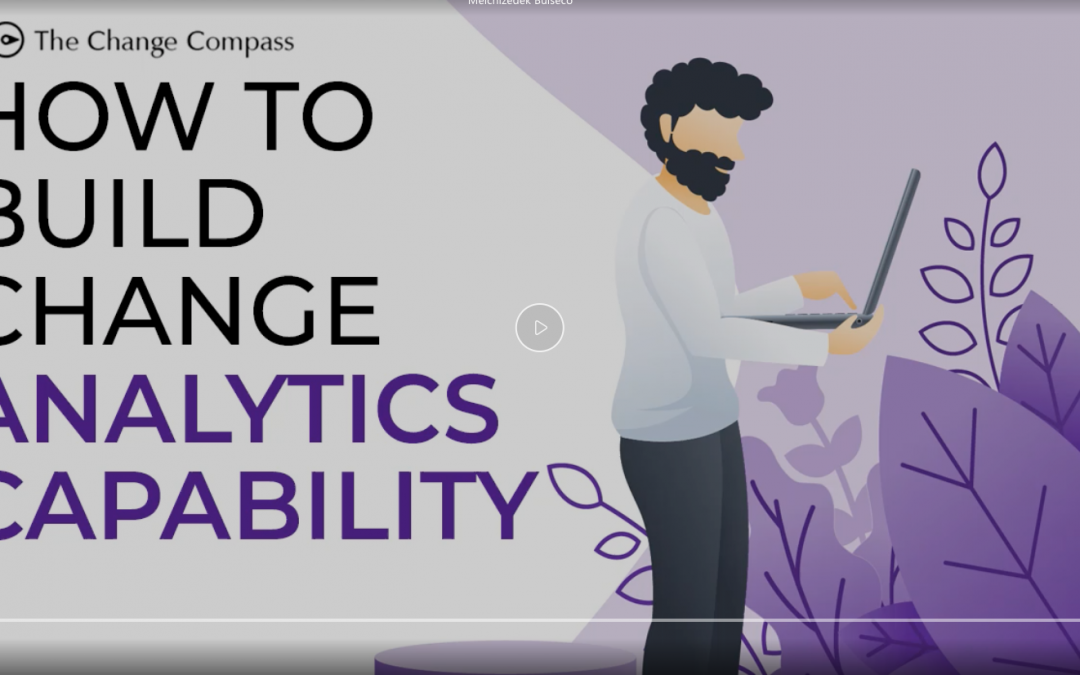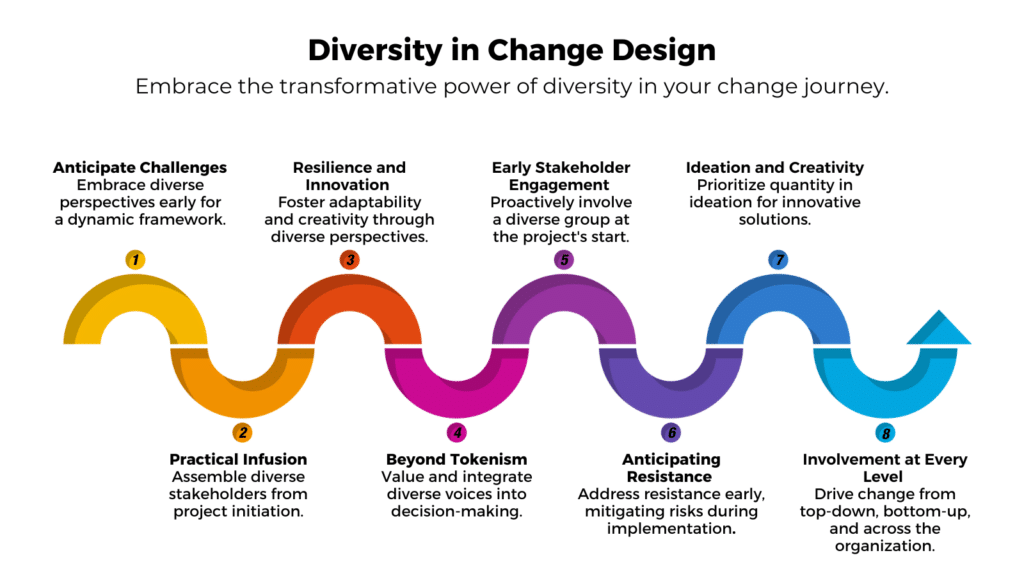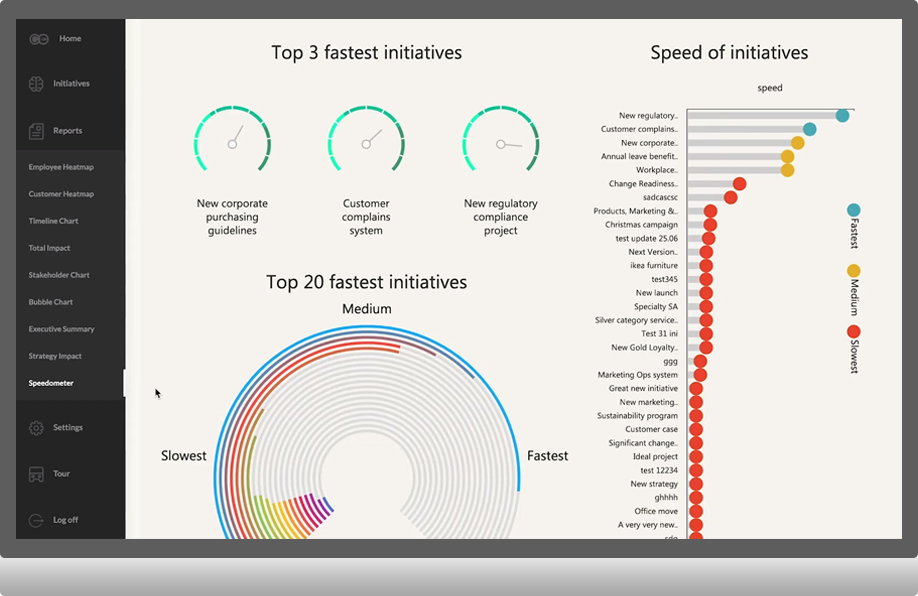


Before your change journey takes off, make sure it’s ….. diverse?
At the time of the article Space X ‘Resilience’ (name of the shuttle) successfully took off into space with 4 astronauts. The astronauts wore super sleek white costumes that were tapered to the body and minimalist in design. They look quite different than the bulky spacesuits that we are all accustomed to in our heads from the 60s. What stood out for me was that this was a diverse team of astronauts. There was 1 female, 1 black, and 1 Asian. This was definitely not the all-white Caucasian males we are used to seeing in the past. It made me ponder about diversity and the change journey that companies are driving.
We all know the drill with most change journeys. It ‘must’ start at the top. It needs to be driven by senior managers. Then the rest of the managers need to support it and convince their people about the change journey. So what is wrong with this? Well, we also know that things often don’t go according to plan. Employees may ‘resist’ the change. They would then be labeled as ‘resistors’. The change manager on the project will then need to devise a plan to deal with these resistors to ensure the change goes smoothly despite them.
Diversity in Change Design
Anticipating Challenges: The crux of this transformative approach lies in its foresight to identify potential challenges before they materialize. Incorporating diversity early in the change design process constructs a dynamic framework that embraces myriad perspectives, experiences, and insights.
Practical Infusion of Diversity: Effectively infusing diversity into change strategies demands a conscious effort across dimensions. Assembling a diverse team of stakeholders from the project’s initiation ensures representation from various facets of the organization.
Shaping Resilience and Innovation: The primary objective is to cultivate resilience and innovation through intentionally incorporating diverse perspectives. Research consistently highlights the adaptability of diverse teams in facing challenges, tapping into a reservoir of creativity born from collaboration among individuals with varied backgrounds.
Beyond Tokenism: Infusing diversity transcends token gestures; it’s about creating an environment where diverse voices are not only heard but also valued and integrated into decision-making processes.
Early Stakeholder Engagement: Adopting an agile mindset, organizations should proactively assemble a diverse stakeholder group at the project’s inception, ensuring early engagement and integrating a broad spectrum of perspectives.
Anticipating Resistance and Brainstorming Solutions: Diversity in stakeholder engagement empowers organizations to interact early, identify potential push-backs, and collaboratively brainstorm solutions. This proactive strategy addresses resistance at its roots, mitigating risks during the implementation phase.
Ideation and Creativity: Inspired by Ideo’s principles, the ideation stage prioritizes quantity over the quality of ideas. Encouraging creativity without premature judgment recognizes that innovation often emerges from seemingly unconventional ideas.
Involvement at Every Level: Moving beyond the traditional top-down approach, organizations should envision change being driven from top-down, bottom-up, middle-out, and across every layer of the organizational hierarchy.
Challenges and Solutions: In the landscape of change, integrating diversity can encounter hurdles. A common challenge surfaces in the form of resistance, where employees perceive diversity initiatives as superficial. To overcome this, fostering open communication is vital. Actively involving employees in the change process not only allows them to voice concerns but also instills a sense of ownership and alignment with the change goals.
Another challenge lies in aligning diverse perspectives cohesively, which may lead to ambiguity or conflicting goals. This calls for robust communication channels and cross-functional collaboration. Encouraging a dialogue that integrates different viewpoints ensures a unified vision that accommodates the richness of diverse perspectives.
Measurable Outcomes: Embracing diversity in change design yields measurable outcomes. Teams reflecting diverse backgrounds consistently showcase heightened innovation and problem-solving capabilities. This innovation often translates into quantifiable improvements in product development, process efficiency, and overall organizational performance.
Measurable outcomes extend to employee engagement and satisfaction. Organizations fostering diversity experience higher levels of employee morale and commitment quantified through employee surveys, retention rates, and increased productivity. These metrics form a compelling narrative for the strategic value of diversity in driving successful change.
As we conclude this exploration into the transformative power of diversity in organizational change, it’s clear that diversity is more than a checkbox—it’s a dynamic force shaping the future of successful change management. The ‘Resilience’ shuttle journey serves as a metaphor for the resilience and innovation that embracing diversity brings to organizational journeys.

In essence, diversity propels change beyond resistance, transforming it into a collaborative, inclusive, and innovative process. The ‘Resilience’ shuttle journey serves as a metaphor for successful organizational change. Embracing diversity in change design is not merely a philosophical stance but a practical imperative. By incorporating diverse perspectives early on, organizations proactively navigate challenges, foster innovation, and drive transformative change from all directions.
As you embark on your change journey, remember that diversity is not just a strategy—it’s the cornerstone of lasting, impactful transformation.
Embark on a Diverse Journey with The Change Compass! Discover how our platform empowers you to embrace diversity in your change initiatives. Book your weekly demo now.

Positive or negative change
Check out our video that explains whether it makes sense to rate changes as positive or negative.

How good change practitioners can become invisible heroes
As change practitioners, we often feel that we create success behind the scenes. We design great change experiences, and if all goes well, then people won’t notice it. By this, I mean that if the impacted person has a smooth experience, and there are no negative incidents or frustrations, then he/she won’t notice the change curve that had just occurred. However, there is more to this.
Analyzing the System
Designing and executing good change experiences is not just about how skillful the practitioner is. It’s about understanding the system. An effective change approach involves assessing what the change needs to be and diagnosing key components of the overall system required to transition impacted stakeholders from current to future. What are these?
For example, you are implementing a new system, and you hear that the last system implementation did not go smoothly. You conduct a series of interviews with key stakeholders to understand what happened. What you found was that there was insufficient drivership from leaders. There was adequate communication and training as a part of the rollout. However, the change was not sufficiently reinforced by middle managers, and therefore after the first 2 months where there was good traction, things slowly faded away. Users started to not use the new system.
In your analysis of the overall system, elements included:
- The extent of commitment and visible reinforcement from various leaders
- The understanding of the why and how this was communicated
- How effective learning interventions were
- Effectiveness of launch visibility on the behaviors of impacted stakeholders
- Influence of manager/leader levels on the behaviors of impacted stakeholders

Preventing Failures Through Problem-Solving
In Dan’s book, some of the key concepts of how one can become an invisible hero by problem-solving before the problem happens include:
- Focus on changing the overall system, versus just one problem
- Identify what has become normal and zoom in on this as a problem
- Systems can be complicated, and therefore when you tweak elements of the system expect the unexpected
- Design ongoing feedback to ensure ultimate success
- Detect problems before they arise by addressing any early warning signs
- Use key points of leverage to exert the greatest impact
By focusing on the overall system, the change practitioner can start to become less reactive and more proactive. A proactive situation is one where you’ve incorporated key risks and challenges and addressed these early on before issues happen. You’ve anticipated stakeholder concerns, potential embedment issues, lack of sponsorship, and ineffective reinforcement of stakeholder behaviors. This is what Dan Heath means by ‘upstream’, that you deal with problems before they occur.
Expanding Perspectives Across the Portfolio
Let’s take this one step further. Organizations are all implementing multiple initiatives. Stakeholders are not rats in the lab that only face one singular project. At any one time, they are usually facing multiple changes. Some large and some small. To truly look at the whole system, we need to consider the system from the impacted person’s perspective.
Some examples of this include:
- Key targeted behaviors driven across multiple projects
- Overall change capacity is impacted by operational factors such as customer work volumes, seasonal work changes, and of course any Covid implications
- The sizes of impacts of various projects, and the priority placed on each of them
- The nature of impacts on different stakeholder groups and how impacts on one stakeholder group could, in turn, result in an impact on another group
At The Change Compass, we focus on providing data visualisation to show elements of the system, whether it’s the relative change capacity of stakeholder groups, to what extent change saturation is exceeded, identifying key behavior changes targeted across initiatives, identifying hotspots for potential synergy across initiatives, or assess which initiatives are at most at risk due to level of impact versus stakeholder readiness levels.
Are you ready to be an invisible hero? To what extent are you already incorporating systems analysis and planning as a part of your change approach and implementation? With the right data, stakeholder feedback, and focus, examining the whole system does not need to be complicated, cumbersome, or time-consuming. In the post-Covid agile world where things are constantly in flux, examining the system is even more critical. This is the ultimate test of the change practitioner in being the architect and tinker.

The Ultimate Guide to Managing Change Post Covid
Leading change as we know it will no longer be the same. Our audience has changed. Our industries have changed. The way people work is changing. The way to engage people is changing. And change has to change as well. I recently spoke with a manager from a government department who said that their organisation has been thrusted into a digital workforce by a 10-year leap. What they had thought unimaginable has literally occurred overnight. Even against a culture and workforce that had resisted virtual ways of working for many years, this is suddenly the current reality. How shall change management keep up with the post-Covid world? How might we as change leaders lead differently?
In this guide we will be dissecting each section of what has changed around us and how change management approach needs to change going forward.
Theme 1: Increased speed of digitisation, automation and robotics
Given the challenges of social distancing and virtual ways of working, many companies are leveraging this opportunity to speed up the implementation of digitisation. Call centres workforce offshore has been constantly disrupted due to Covid. As a result, companies have implemented working from home for call centre consultants. Others have invested deeply in automation and robotics to better cope with oncoming customer call volumes.
Even today, there are already several AI-enabled robot call centre agents who are able to handle a range of common customer enquires and tasks. Many are designed to speak just like humans are are at times almost indistinguishable from a real human voice. We may not be there just yet in terms of dealing with more complex customer enquires. However, given the significant pace of technical development, we are not far from this.

Chinese companies have been fast-reacting in response to Covid given widespread business impacts on their operating models. For example, JD.com Is a Chinese e-commerce company that has been removing human touchpoints in its operation through process automation and robotics. JD.com has invested in high tech and AI delivery through drones and, autonomous technology and robots and has one of the largest drone delivery system capabilities in the world. During Covid they ramped up their network to supply household goods to those who are in lockdown.
What does this mean for change management? Change management also needs to catch up and gear-up for the digital organisation. Just as digital call centre agents become the workforce of the company, digital engagement and data centricity should be the focus for the change practice. Key focus areas for the change practice should be:
A) Automation and digitisation – A standard, repeatable and effective way of engaging with stakeholders must be a key focus area. This includes:
- Surveying, pulsing and measuring stakeholder readiness in a way that is standardised, scale-able and repeatable with effective reporting. Examples could be Microsoft Forms, Survey Monkey or Google Forms that are setup to continuously track stakeholder readiness
- Engagement tools to support co-design and involvement of employees. There is a myriad of digital tools already available such as Yammer, Trello, Microsoft 365 tools such as Teams, and Slack.
- Change impact assessment and portfolio management. Leverage digital ways of capturing, sharing and reporting on change impacts of a range of stakeholders such as customers, partners and employees. With the speed of change iterations across initiatives and increasing numbers of changes emerging, this is a core capability for the future agile organisation. Tools such as The Change Compass may assist.

Use of robotics in engaging with a virtual workforce. Projects and initiatives drivers have still relied on traditional ways of engaging with stakeholders and employees such as emails and newsletters.
To be more engaging, dynamic, and scalable, it may also make sense for the larger and more complex initiatives to leverage bots in engaging with and addressing stakeholder concerns. With a range of providers available, bots may be designed with minimal effort required. Standard FAQs may be combined with prompting questions. Surveys may also be incorporated within bots as well.
The best part of all of these digital tools is that analytics and reporting are designed into the tool and therefore saving change leaders significant time and effort in using data to report on progress. In the digital and virtual organisation, data needs to be constantly nurtured, measured and updated. Opinions and assertions will no longer be tolerated. Agile teams base decisions on updated data and trends.
As change leaders we have the opportunity to measure and foresee changing perceptions, readiness and needs of stakeholders. In traditional organisations, leaders would walk the floor or physically approach staff to gauge concerns. The new organisation needs to be geared for constant, data-based sources of stakeholder sentiments, using not just lagging indicators (e.g. employee satisfaction, and readiness surveys) but leading indicators such as sentiment analysis.
Theme 2: Increasingly frequent business disruptions
With what seems to be increasingly frequent business disruptions such as natural disasters, epidemics, and business models, companies need to be agile, resilient and flexible. What would have been typical corporate practices of 3 or 5 year long-range planning can now be thrown out the door. It doesn’t mean that companies no longer need to do long-range planning, but that plans need to flexible enough to take into account constant disruptions and industry changes.
This also needs to be supported by an organisation that is capable of flexing up, down and across. This means, upsizing and downsizing as required to better cater for customer volumes. Flexing across to other supplementary or complementary products or services as required to discover and benefit from new revenue sources.
What does this mean for change leaders?
With Covid, most organisations have experienced the criticality of having an effective business continuity plan. To execute this, it requires the ability to suddenly change directions within a short period of time. Leaders need to be able to effectively engage with and establish trust with their teams during these tumultuous times.
Business disruptions can bring out the best or the worse in the existing capability of the organisation. Without existing trust between the leadership and employees, any changes in the course of the company may lead to confusion, greater distrust, stress and therefore significant dip in performance.
Some may argue that this seems natural since during the change process it is normal to expect a dip into the ‘valley of despair’ during the initial period of the change, prior to confidence being established. However, several McKinsey studies have disproved this and that companies do not necessarily need to go through a significant dip in performance in order to rise up to ‘normal’ performance levels.

Building change agility
To deal with constant and unexpected disruptions organisations must build agility. What is agility and how does one build it?
- McKinsey (2015, Aghina & De Smet) proposed that agility is about driving speed with stability. This is the balance between stability (resilience, reliability and efficiency) as well dynamism (fast, nimble and adaptive). This means having a relatively stable set of design structures, governance arrangements and processes within a relatively unchanging set of core elements, or a fixed backbone. To match this, a set of loose, dynamic elements that can be adapted quickly to new challenges and opportunities.
- The Project Management Institute (PMI) outlined that change agility is about increasing the likelihood that its strategies will be realised, through effective portfolio, program, project and change management. This includes:
- Establishing a common understanding of sponsor behaviours and expectations
- Modify reward systems to favour team collaboration over individual contributions
- Establish decision authorities at the lowest possible level, eliminate layers of governance structures
So what should change leaders do?
Build transparency and trust through constant engagement and involvement. One-way talk is not going to cut it if the goal is to achieve a deeper level of organisational engagement. Employees need to be involved in understanding organisational challenges and have the opportunities to be involved in contributing to and shaping how the organisation is addressing business risks and challenges.
This requires discipline and ongoing commitment, starting with small micro-habits such as communications styles, leveraging the right communication mediums and instil ongoing assessment of these channels and employee sentiments toward engagement effectiveness.
Digitally, what this can look like is a leader who uses several mediums such as Yammer, intranet, email and regular town hall to engage in 2-way dialogue with employees. For organisations that do not yet have leadership trust, there may be initial reluctance to speak openly and candidly. Openness to share opinions and feeling safe to do so needs to be gradually cultivated and cannot be forced. Trust can only come with authenticity. The leader also needs to demonstrate that feedback, opinions and recommendations have been listened to.
How do change managers support change agility within initiatives?
Whilst most change managers are focused on supporting one particular initiative, there is a critical role that change managers can play to support change agility.
- Designing change releases into smaller pockets of ongoing releases
By designing smaller, and more digestible releases into the organisation, the initiative is supporting the ongoing development of change capability for small, ongoing changes. Over time, the continuous experience of small changes will help to shape the organisation to get used to small changes are the new norm. Change becomes business as usual.
Small changes are also more likely to be successful as the quantum of change is much easier to adopt than larger changes. The perception of the difficulty to adopt the change is mitigated. The actual process of change is also a smaller step to take.
2. Setting the pace of change
Just as the design of change releases can shape the organisation, so can the pace of change. Change managers should work with their initiative(s) to design the speed of change so that it enhances organisational learning for greater speeds of change over time. Just like running, one starts training by doing shorter runs within shorter distances. Over time, distances and pace can be increased to build overall running speed.
Organisations that are experienced in concurrent and ongoing weekly changes are used to having to get ready for and adjust to changes as the norm. They know where to go for information and help. They are also confident that the support mechanisms are there so there is good trust in their leaders and in the support system for change (whether digital channels or particular initiative roles).
Previous experiences from a faster pace of change means that they are used to knowing what to go through in terms of change. They are familiar with what questions to ask, what support is required and even how to support one another.
3. Design effective engagement routines that support deep engagement
Most organisations have standard business as usual communication routines such as monthly newsletters, town halls, team meetings, etc. The usual practice is to leverage these channels to let impacted stakeholders group know about impending changes.
What’s the problem with this? The problem comes when there is lots of changes impacting the same stakeholder group and the existing communication routines don’t seem to have enough time to go through everything. For example, using team meetings to communicate changes to impacted customer facing staff could be a standard practice. If the team time becomes overwhelmed with various announcements of changes with limited time for other BAU activities such as development, general communications and engagement then there lies the problem.
How do we get around this? Build the expectation to leverage existing digital platforms and promote a ‘self help’ culture whereby teams regularly visit intranet pages, Yammer, read emails or newsletters to find out what is happening. If the only time an impacted customer facing staff finds out about the change is through a team meeting then this is not the most effective use of meeting time.
A more effective engagement mix might be a combination of multiple mediums, using emails, yammer, other digital channels such as intranet pages to communicate the message. If the expectation is set with customer facing staff and there is existing practice of proactive seeking of information, then this decreases the risk of reliance on one particular channel.
The act of proactively seeking information also by itself enhances the engagement of the impacted customer facing staff who would then seek information mediums that they are familiar with and are comfortable using. Any team meetings or town halls could then be used for Q&A and interactions versus information download.

4. Incorporate the emphasis on agility within learning interventions
Learning agility is the “propensity to continually learn, unlearn and relearn mental patterns and applications from various sources” (Mercer). Learning agility supports and promotes agility mindsets and behaviours.
An employee who is agile in learning is willing and able to learn new things fast, is open-minded, inquisitive and has the patience and drive to learn new areas. To achieve this, employees need supportive leaders who emphasise the importance of continuous learning and also role model this behaviour.
They also need a learning environment where there is time allocated to learn on the job. Leaders take into account failures as a part of learning and establish a culture that is safe to fail. Many organisations such as Google, Intel and Microsoft in fact celebrate failure when the right steps are taken as a part of the learning process.
When you are designing learning interventions as a part of your initiative, design interventions that support learning agility. For example, as a part of learning content, encourage learners to try practicing the new behaviours as exercises. Provide online feedback loops to support continuous learning. Leader learning should promote the above-mentioned behaviours of supporting employees to try different behaviours and any failures that may occur.
Initiative-based learning should also support broader organisational agility through emphasising on the role of innovation and implementing test-and-learn or experiments. For example, content exercise could include asking the learner to come up with ways of arriving at the desired outcome. If the outcome is to follow particular process steps, ask the employee to come up with ways to proactively support and champion this new process across the team.
5. Build an effective narrative around the need for agility
To build or support an agile organisation, communication is key. A compelling narrative or story must be built and implemented that tells the ‘why’ of agility. What is agility important for the organisation? Why not? What does this mean? How to achieve agility? These are common elements of a clear narrative.
A clear and compelling narrative should be developed and linked with various initiatives. Through this, multiple communications from different initiatives are supporting the same message. With each change, the impacted employees are receiving the message about the importance and need for having an agile mindset.
Each leader should also be encouraged to tell their own stories to support the narrative. Nothing is more powerful than an authentic story told by a leader. Ideally the story should be personal and reflects an experience that the leader has been through that shares the theme of agility. Stories loose their power and effectiveness if they are just read out and full of ‘corporate speak’.
Juggling a multitude of continuous agile changes
In the VUCA (volatile, uncertain, complex and ambiguous) world where things are constantly evolving and where agile practices are the norm, how change management is set up should also change.
Imagine you’re spinning 30 plates at the same time. Some plates are smaller some are bigger. Some are spinning at a faster rate than others. Some need to finish spinning earlier than others. There are new plates that need to be added to be spun. To add to the complexity, the plates are constantly evolving. Some are changing colours, others are changing sizes. As a result, how you spin each will need to change as well based on how they are evolving. This is what a lot of organisations are facing right now.

So how should one deal with this situation?
- Change management vision and strategy
A clear and logical change management vision and strategy is required to support where the organisation is heading towards. With the various changes mentioned previously, the role of change management is to realise the strategy through a successfully delivered business plan, including various initiatives.
Understanding where the organisation is heading towards, the end state and the roadmap to get there, the change management function needs to identify key strategies to enable successful change. Is the strategy focused on driving agility through leadership and agile practices? Should change management focus primarily on initiative delivery, capability development or governance and reporting?
Is there a clear translation of how each change strategy or tactic will support the realisation of each part of the business plan?
2. Resourcing
To support the various initiatives as a change management function we need to look strategically at the skills required and the volume of work upcoming. What are the emerging change skills required to support the initiatives? Is there a large volume of regulatory changes? What about digital projects? Depending on the nature of projects emerging a strategic workforce planning exercise is required to plan forward. Develop scenarios of volume of projects and change support requirements to develop likely resourcing demands.
A mapping of various change skills should be carried out to flesh out key skills required to support upcoming initiatives. Learning and development skills, stakeholder engagement, sponsorship coaching, communications, organisational design, impact assessment, etc. may be common change skills to map out.
After the workforce planning exercise is completed there should also be a quick quarterly review process to assess to what extent the plan should still remain the same or that it needs to alter based on what has changed. In this way, the change function can regularly keep tab on any evolvement in resourcing needs.
3. Managing the portfolio of changes
With multiple constant changes that are being iterated constantly, a portfolio approach to managing changes is required. A portfolio approach to managing change requires a view of the change initiatives across the board. With a view of all initiatives, one can then better make decisions about prioritisation, change capacity, capability required, operational implications and change maturity required.
To read more about managing a portfolio of changes visit The Ultimate Guide to Change Portfolio Management.
4. Data and change management
Data has become and will continue to become a critical enabler for change management, just like most other disciplines. With data, change professionals can make significant impact on business effectiveness and drive benefit realisation.
- Real time data can help support fast and agile decision making and allow the business to move with speed
- With sufficient historical data organisations can also make predictive analysis to understand what the future may hold using data
- Audience data can allow change professionals to address specific stakeholder needs based on data such as preferences, readiness and engagement levels
- Portfolio level impact and readiness data can help leaders zoom in on high risk initiatives
- Drive data-based decision making versus stakeholder opinions and assertions
- Digitisation of change data to manage the increasing complexity of measuring change across initiatives
To read more about developing change analytics maturity please visit the following article.
Turn change data into actionable insights.
5. Structure of change management
Instead of being structured around individual projects, to support evolving initiatives from a scale and effectiveness perspectives change practices need to re-think the best structural options.
Another popular way is for change practices to be structured around change functions such as learning and development and communications. However, to be more adaptable and flexible to support emerging initiatives it may make sense to adopt an ‘agile team’ structure where teams are organised around portfolios and impacted business units, rather than disciplines.
The advantage of these options will be that change will be better positions to scale up or down as required depending on resource requirements. Focus around business units will ensure a more business-centric approach to change that takes into account multiple initiatives that impact the same stakeholder group.

Theme 3: Evolving virtual ways of working post Covid
Post Covid organisations will examine their ways of working and re-assess what is possible to manage any residual Covid risks as well as leveraging virtual working capabilities developed during Covid. Organisations will leverage virtual working as much as possible as it reduces cost of operating, however, balancing this with face to face office time to maximise productivity and effectiveness.
Organisations also need to take virtual working to the next level by building greater organisational capability. For example, previously most brain storming sessions could only be done via face to face. Now companies need to buckle down and truly leverage various digital tools to enable team discussions, collaboration and idea sharing, 100% virtually. With some working in the office and others at home or other locations, this will be critical.
For change practitioners a key element of the new ways of working is engagement approaches. Truly engaging employees and stakeholders in the post Covid world will be challenging. We all know that face to face communication trumps other forms of communication in terms of impact. However, when this option is not available, clear practices need to be established to maximise engagement effectiveness.
- Meeting practices. Organisations should establish clear meeting practices that are effective virtually, such as ‘round the grounds’ checking on how each participant is feeling or thinking, pausing for feedback, asking questions to check understanding, using video to show body language, etc.
- Strengthen organisational culture of employees proactively using particular digital channels for communication. A significant effort needs to be placed on enabling employees to habitually check and participate in digital channels such as Yammer or Microsoft Teams to exchange ideas and keep up with changes. With the pace of change increasing, reliance on email and intranet pages is no longer sufficient and also because these are largely 1-way communication vehicles. With a culture where employees are proactively engaged in digital engagement channels, driving change will be more effective as an outcome
- Diversity of audience. Organisations are now realising that if they are able to have most of their employees work virtually, this means they are not restricted to hiring talent from particular locations. This means the talent pool can be national or even international. With a greater diversity of physical locale of employees and even cultures, come challenges with engagement and communications. Particular cultural or regional references may need curbing to ensure there is an inclusive working environment. Strategies may also need to be developed when implementing change initiatives to this in multiple physical locations.
- Performance management. Managing performance virtually will be more complex for managers who cannot ‘see’ the employee. A degree of trust and outcome based management needs to occur. For the change practitioner, the focus is on how to measure and track performance within a mixed working environment both physically and virtually. For digital changes it may be easier to measure change virtually, but for other changes there may be challenges in sensing behaviour change in a virtual environment.
- Health and safety management. With more employees working from home there are risks such as ‘digital stress’ (from too many video meetings for example) and environmental risks such as children or other family disruptions. During Covid the working day seems to have expanded, by 2 hours in Britain, France and Spain and 3 hours longer in America (The Economist). Change practitioners need to be sensitive to this when there are multiple changes happening, likely leading to risks in health and safety of employees.
The post Covid world presents challenges for organisations and therefore the change practitioner. With challenge comes opportunities. The environment is ripe for the change discipline to take the bull by the horn and transform into a strategic and value adding service to the organisation. One that is critical to its ongoing transformation and one that is evolving with the times.
To read more about project planning post Covid click here.